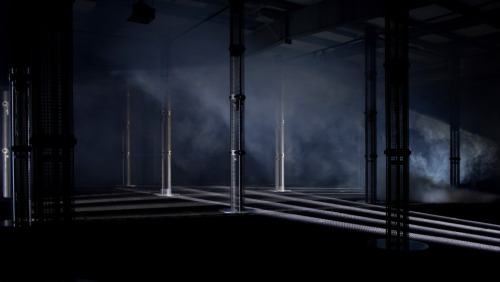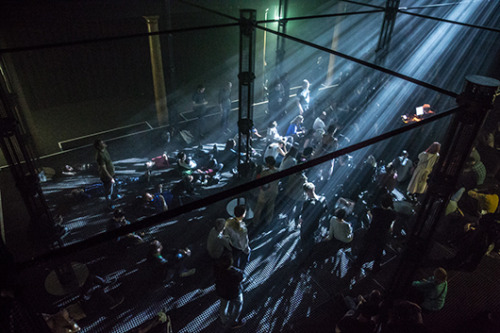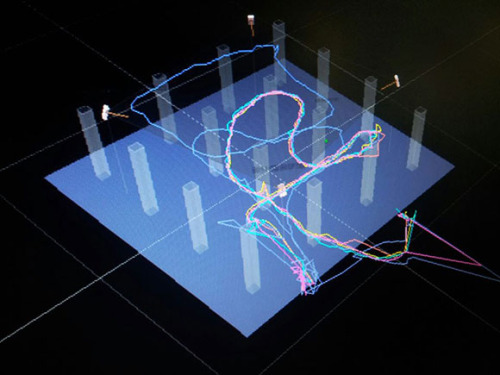Of Nature and Things
 Thursday, December 7, 2017 at 15:56 tagged
Thursday, December 7, 2017 at 15:56 tagged  art,
art,  installations,
installations,  sound
sound 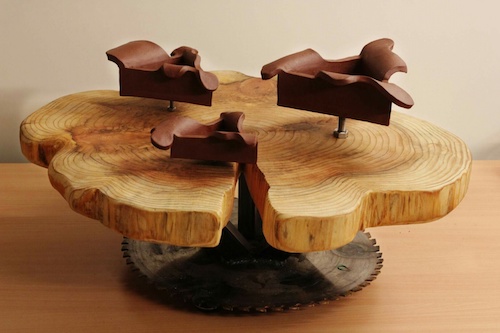
 Thursday, December 7, 2017 at 15:56 tagged
Thursday, December 7, 2017 at 15:56 tagged  art,
art,  installations,
installations,  sound
sound 
 Monday, January 23, 2017 at 10:28 tagged
Monday, January 23, 2017 at 10:28 tagged  glass,
glass,  installations,
installations,  magnetic,
magnetic,  nature,
nature,  physical
physical Since ancient times, Japanese people have been sensitive to perceive nature as it is, from the sound of the wind through pine trees or the singing of insects in each season. ‘Chijikinkutsu’ was developed with this kind of delicate sense. - Nelo Akamatsu
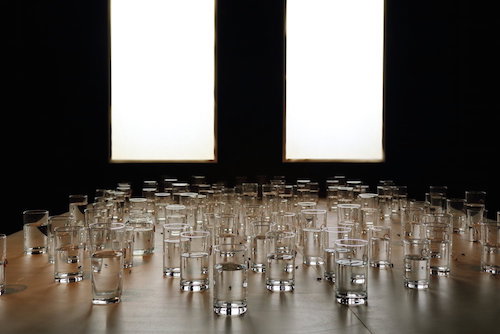
Nelo Akamatsu is a Japanese multidisciplinary artist. “Chijikinkutsu”, the title of his latest work, is a contraction of the words “Chijiki” and “Suikinkutsu”. The first meaning “geomagnetism” and the latter is the word for a sound installation ornament for traditional Japanese gardens, invented in the 16th century.
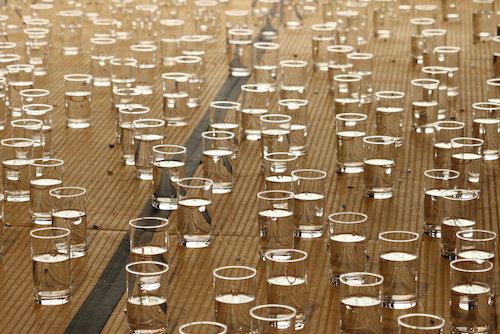
In “Chijikinkutsu”, sewing needles are floating on water in glass tumblers which are magnetized, so they are affected by geomagnetism and turn like a compass. When electricity is applied to the coil which is on the outside of the glass tumbler, it creates a temporary magnetic field drawing the needle to the coil. The needle hits the glass creating a very delicate sound.
“A round surface of water in the glass with a floating magnetized needle, reminds me somewhat of a tiny earth with geomagnetism. The smaller the sounds of the glasses will be, the more keenly viewers’ sensibility will be sharpened. In the meantime, they realize that the sounds don’t come from outside of their bodies, but already exist inside of their mind.” - Nelo Akamatsu
I love the minimalist approach of only using a few elements and letting the complexity emerge from having multiple instances. Also, where most sound art is often very “visual” in simply showing the elements that the installation experience exists of (the speakers, the wire, the sensors), this work does not show the regular elements but maybe an even more stripped version of it. A speaker is also a coil being pushed and pulled, it also works with electromagnetism. In that sense, Akamatsu’s work is a very, very rudimentary work of sound art.
 Friday, May 13, 2016 at 15:02 tagged
Friday, May 13, 2016 at 15:02 tagged  art,
art,  installations,
installations,  sculpture,
sculpture,  sound,
sound,  soundart
soundart 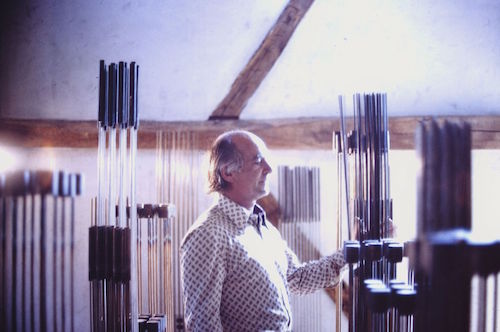
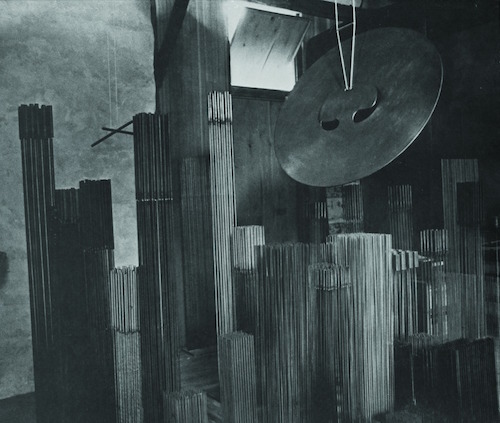
 Friday, November 20, 2015 at 10:51 tagged
Friday, November 20, 2015 at 10:51 tagged  installations,
installations,  instruments,
instruments,  percussion,
percussion,  performance,
performance,  spatial
spatial  Sunday, September 27, 2015 at 15:28 tagged
Sunday, September 27, 2015 at 15:28 tagged  installations,
installations,  public space,
public space,  soundart
soundart In Neerpelt, a small town in the very north of Belgium on the border with the Netherlands, there’s the very unique Klankenbos (or Sound Forest). A public forest filled with sound art installations hidden between the trees, accessible to anyone for free any moment of the day. Something so unique, it’s strange we’ve never written an article about it here on Everyday Listening. Time to make up for that.
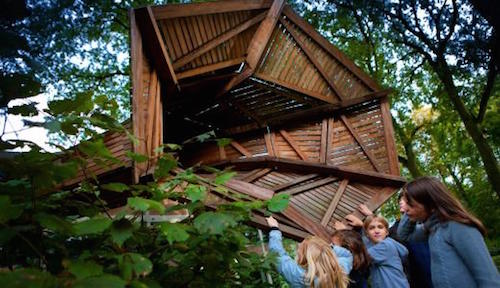
Made back in 2005 as a temporary sound art collection commissioned by Musica, the Belgian “impulse centre for music”, Klankenbos has since then become permanent and has been there for ten years already.
Pierre Berthet’s Houses of Sound: Two wires connect two huts on the banks of the Dommel. These are connected to exciters and tin can resonators in a network of wires among the trees around the installation. Inputs (mainly sine waves) transmitted through the exciters make the wires tremble, causing vibrations that create a buzzing resonance in the huts and cans.
With a few additions to the collection over the years, as well as the development of mobile installations, the Klankenbos is everything but a static collection. Just this year sound artist Laura Maes added an interactive sound-bench running on solar energy.
Staalplaat Soundsystem & LOLA landscape architect’s Composed Nature: Composed storms in the trees by washing machine motors, making the trees and it’s leaves shake.
Klankenbos does not only exist of installations in the physical realm: just recently artist Rozalie Hirs created Curvices, a musical grid that works with GPS tracking and can only be heard via a smartphone. Because the organization of Klankenbos is very aware that the forest is very important as well: it shouldn’t end up being a place of technology under some trees, and these technologies allow artists to put their own virtual sonic world over the actual one.
Erwin Stache’s Konversation: 12 mechanical plants conversating through signs and sounds.
On sunday the 18th of October Musica invites everyone to celebrate 10 years of Klankenbos with an afternoon with sound art, music, poetry and silence in the Klankenbos. Artists who will be present are Stijn Demeulenaere who will present his field-recordings of the past few years in a way fitting to the Klankenbos, Hans van Koolwijk in a performance with amateur musicians playing 65 helium-filled balloons, the robot orchestra of the Flemish organisation Logos who designed instruments for Aphex Twin, et cetera. They’ll be there presenting new work by young composers. Enough to see and hear!
 Friday, April 3, 2015 at 12:03 tagged
Friday, April 3, 2015 at 12:03 tagged  acoustic,
acoustic,  drums,
drums,  ecology,
ecology,  installations,
installations,  sonification
sonification We often think of sonification as an algorithm that translates data into an often abstract, often digital sound. R x2 by Moscow-based media artist Dmitry Morozov a.k.a. ::vtol:: is different in that aspect. In the “Sonify…” series, we look at different ways of sonifying data. This time: Earthquakes!
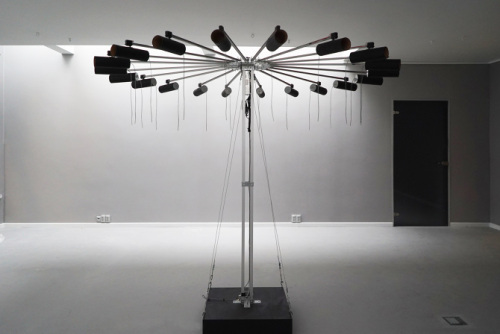
R x2 is a kinetic sound sculpture collecting data on the shocks in the earth’s crust (earthquakes) and capturing all of them above 0.1 Richter magnitude scale. On an average day there are up to 200 of these quakes.
The data is converted into signals that control motors connected to a bunch of Thunder Drums acoustic drums. These Thunder Drums consist of a spring attached to the skin of the drum, so when it’s shaken the spring moves and creates a continuous resonance through the body of the instrument, not unlike the rumble of thunder. The rumble that sounds fits the character of an sonified earthquake quite well.
 Monday, February 23, 2015 at 21:57 tagged
Monday, February 23, 2015 at 21:57 tagged  air,
air,  art,
art,  field,
field,  infrasound,
infrasound,  installations,
installations,  lowfrequency
lowfrequency 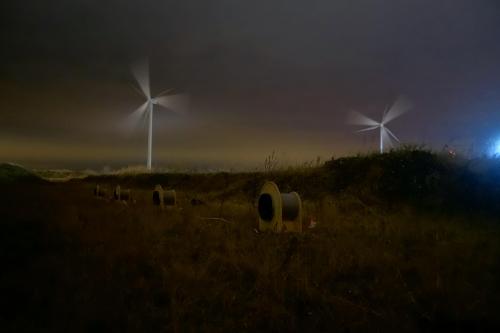
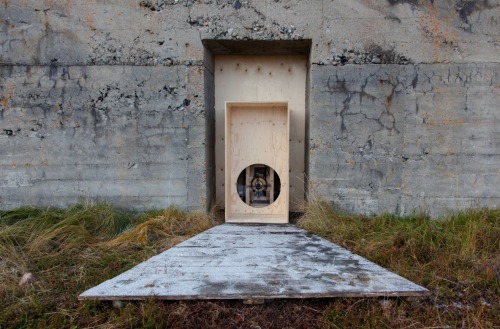 (footage from an earlier version)
(footage from an earlier version)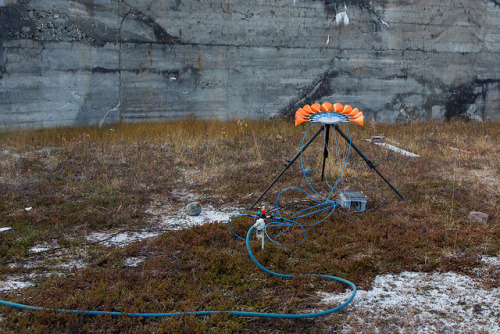 According to Ganchrow, infrasound is what connects the skies, oceans and earth. “Micro-movements in the earth crust can translate and arrive at mountain ranges. These move a nanometer backwards and forwards. That movement translates to a movement of air, that air produces a tone.” It’s a tone below the threshold of hearing, but still there’s a sensation of it, as it can shape the clouds coming over that mountain range, for example. You can view an interview with Raviv explaining infrasound here:
According to Ganchrow, infrasound is what connects the skies, oceans and earth. “Micro-movements in the earth crust can translate and arrive at mountain ranges. These move a nanometer backwards and forwards. That movement translates to a movement of air, that air produces a tone.” It’s a tone below the threshold of hearing, but still there’s a sensation of it, as it can shape the clouds coming over that mountain range, for example. You can view an interview with Raviv explaining infrasound here:
 Monday, December 1, 2014 at 13:45 tagged
Monday, December 1, 2014 at 13:45 tagged  art,
art,  installations,
installations,  percussion,
percussion,  sound,
sound,  soundart
soundart Nicolas Field is a musician, composer, and more recently, active in fine arts. He studied percussion in Amsterdam and The Hague, and is a founder of N-Collective, who strive to support and promote adventurous music.
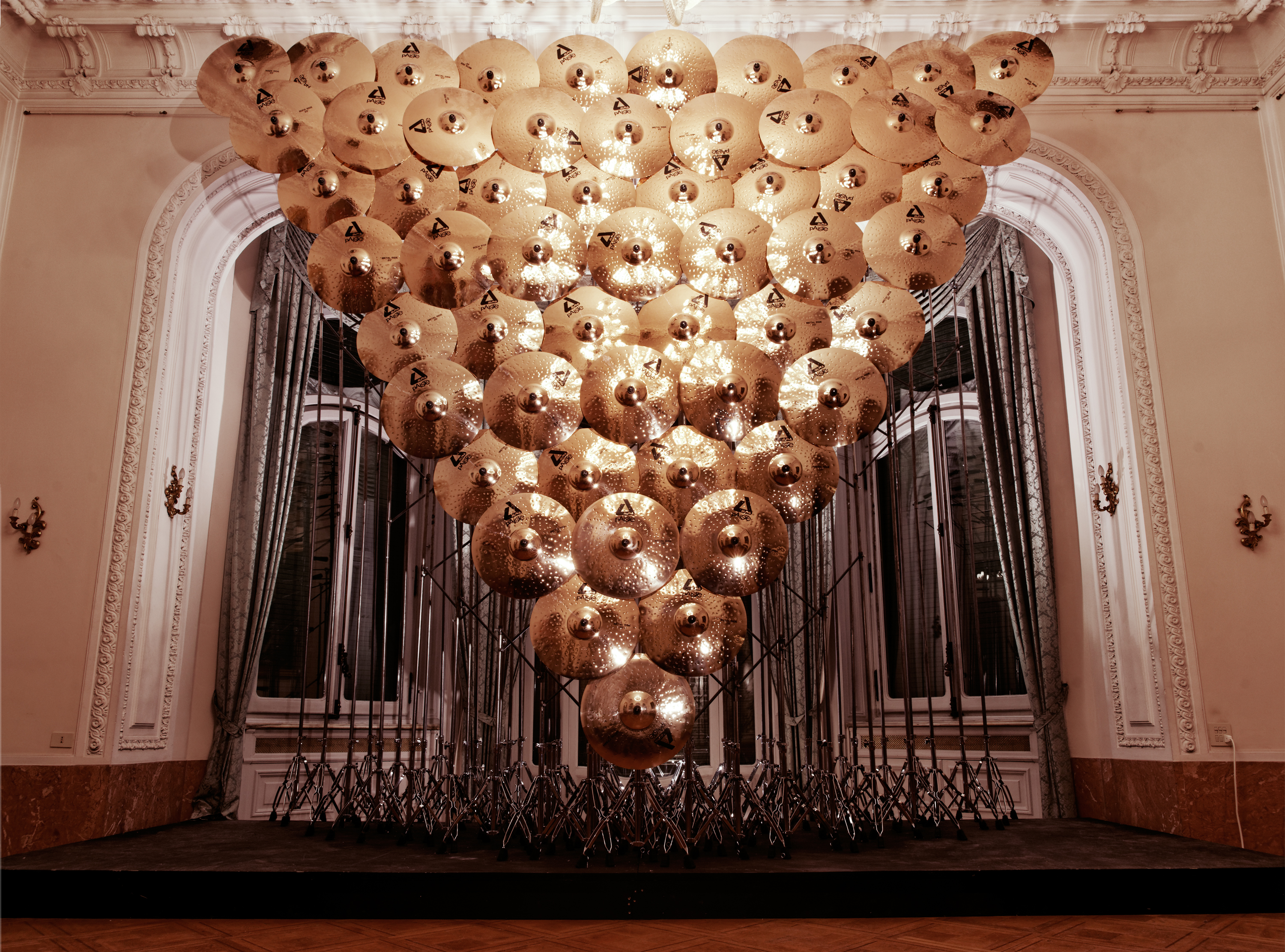
His work “Shimmering Beast” is a huge, upside down triangle, formed by sixty cymbals and stands, bass-transducers and light. This monumental and visually stunning collection of cymbals strike eachother lightly because of a resonating floor, and produce a shimmering sound. “Shimmering Beast” was created during a residence in the Swiss Institute in Rome and was a part of the Needcompany performance Caligula.
This installation is one of many which can be seen at Orkest! a group exhibition featuring works by Rutger Zuydervelt, Julian Sartorius, Oliver Beer, Rubén D’hers, Michael Schmid, and Konrad Smoleński. Orkest! can be seen from the 7th of december 2014 until the 6th of march 2015 at the netwerk / centre for Contemporary art in Aalst, Belgium. We’ll feature some other works from this exhibition in the coming weeks.
 Wednesday, November 12, 2014 at 0:22 tagged
Wednesday, November 12, 2014 at 0:22 tagged  installations,
installations,  light,
light,  soundart
soundart Nicolas Bernier is a Canadian artist creating sound installations and performances. We’ve covered his work Frequencies (A) last summer. His “Frequencies” series is an ongoing process focusing on basic sound generation systems. For this iteration, Frequencies (Light Quanta), Bernier taking the quantum -the smallest measurable value of energy- as his conceptual basis. The project uses basic quantum physics in a metaphorical way to create 100 sound and light fragments that develop themselves organically, generating “an never expanding but yet disruptive form in time and space”.
Always good to see an artist develop an idea further, and look at it in different ways.
 Tuesday, October 21, 2014 at 0:10 tagged
Tuesday, October 21, 2014 at 0:10 tagged  installations,
installations,  soundart,
soundart,  spatial
spatial 